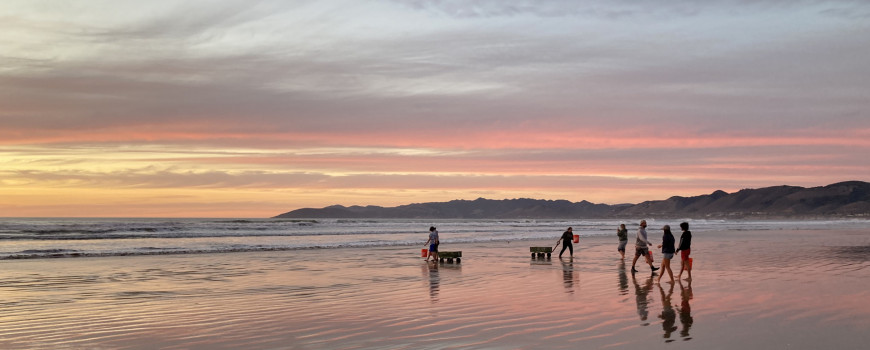Small-scale fisheries pose a number of management challenges. They are often understudied and lack data, yet they can be economically and culturally important. Pismo clams (Tivela stultorum) exemplify these issues and challenges. This iconic California native species supported a commercial fishery through the mid-20th century and continued to support a robust recreational fishery until the 1980ss when populations declined. Despite its importance, there has been little research on Pismo clams for more than 50 years.
Pismo clam populations appear to be increasing along the central coast of California. While the causes of this increase are unknown, there is an opportunity to improve understanding and inform management of this species to support its recovery.
This project will explore the population dynamics and spatial ecology of Pismo clams along the central California coast to illuminate how populations are changing over time and how they are spatially distributed along central coast beaches. This information will be used to develop a population model that allows managers to evaluate the impact of potential management strategies and understand the impact that poaching is having on Pismo clam populations.
This research will be accomplished with community partners at the California Department of Fish and Wildlife, California State Parks, and Creek Lands Conservation.



